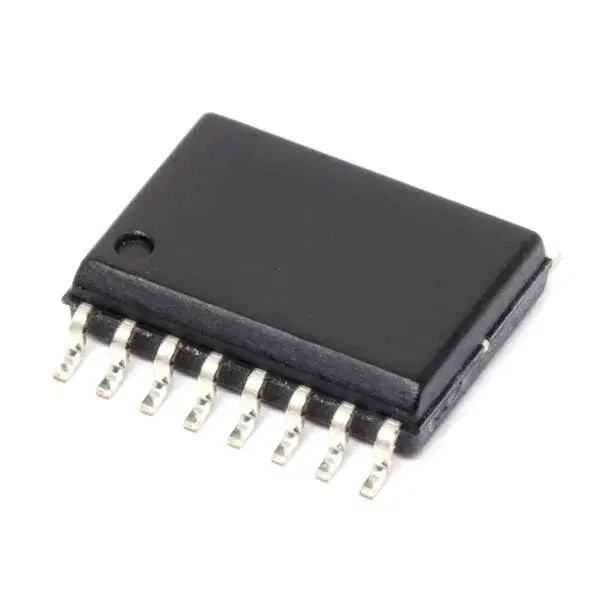Email format error
Email cannot be empty
Email already exists
6-20 characters(letters plus numbers only)
The password is inconsistent
Email format error
Email cannot be empty
Email does not exist
6-20 characters(letters plus numbers only)
The password is inconsistent


The Future of Display Technology: A Deep Dive into Touch Screen Controller ICs Factory
In today's digital age, touchscreens are an integral part of most modern devices. From smartphones and tablets to interactive kiosks and automotive displays, the demand for touch-sensitive technology has skyrocketed. At the heart of every touchscreen lies an essential component: the touch screen controller ICs. These chips play a pivotal role in ensuring that touch inputs are accurately detected and processed. This article will explore the fascinating world of touch screen controller ICs, their manufacturing process, and why partnering with a touch screen controller ICs factory can be key to achieving cutting-edge technology.
What Are Touch Screen Controller ICs?
Touch screen controller ICs are integrated circuits that manage the interface between the user and the touchscreen display. These ICs detect and process touch inputs, converting physical touch data into digital signals that the device's processor can understand. Whether it’s a capacitive touch sensor or a resistive touch panel, these controller ICs are responsible for the accuracy and responsiveness of the touch experience.
The Role of Touch Screen Controller ICs in Modern Devices
From smartphones to smart home devices, the role of touch screen controller ICs cannot be overstated. These ICs are responsible for:
- Touch detection: Whether a user taps, slides, or performs multi-touch gestures, the controller IC detects these actions and communicates them to the device’s processor.
- Signal processing: The IC processes the touch data and converts it into actionable commands that the device can interpret, ensuring smooth interaction.
- Reducing noise: Touch screen controller ICs help eliminate noise and false signals, providing more precise touch detection, even in challenging environments.
Why Choose a Reliable Touch Screen Controller ICs Factory?
When selecting touch screen controller ICs for your products, working with a trusted touch screen controller ICs factory is crucial. Here’s why:
1. High-Quality Manufacturing Standards
A reputable factory ensures that the ICs are produced under strict quality control measures. This leads to higher reliability, durability, and performance, which are essential for devices used in a variety of industries, from consumer electronics to automotive systems.
2. Cutting-Edge Technology and Innovation
The touch screen industry is constantly evolving, with new advancements in touch technology, such as multi-touch sensing, 3D touch, and pressure-sensitive displays. Partnering with a forward-thinking touch screen controller ICs factory allows you to leverage the latest innovations and stay ahead of the competition.
3. Customization Options
Every device has its unique requirements. A professional touch screen controller ICs factory often offers customization options to ensure that the ICs are tailored to your specific needs. This can range from sensor configurations to power optimization and more.
4. Scalability
When your production volume grows, working with a factory that has the capability to scale up operations ensures that you can meet increased demand without sacrificing quality or delivery timelines.
How Touch Screen Controller ICs Work: The Technology Behind the Touch
To better understand the importance of touch screen controller ICs, let’s take a closer look at the technology that powers them.
Capacitive Touch Technology
Capacitive touch screens are the most common type of display in modern smartphones and tablets. The touch screen controller IC in these devices works by detecting changes in the electrical field caused by the human touch. When a finger approaches the screen, it alters the electric field, and the controller IC detects this change and registers the touch.
Resistive Touch Technology
While capacitive screens dominate the market, resistive touch technology is still in use for applications that require durability and cost-effectiveness. Resistive touch screens rely on pressure to register touch inputs. The touch screen controller IC processes the pressure exerted on the screen and converts it into input commands.
Optical Touch Technology
In optical touch screens, infrared sensors around the edges of the screen detect touch locations based on changes in the light field. The touch screen controller IC processes the sensor data to determine where the touch occurred. This type of technology is often used in large displays, like interactive kiosks and signage.
The Manufacturing Process of Touch Screen Controller ICs
Manufacturing touch screen controller ICs involves several critical steps, all of which take place in highly controlled environments to ensure the highest level of precision and functionality.
Step 1: Design and Prototyping
The first step in manufacturing touch screen controller ICs is the design phase. Engineers collaborate to create the initial blueprint, which includes choosing the right semiconductor materials, circuit layouts, and touch detection technologies. Prototyping allows for testing the design in real-world applications to ensure it meets performance and reliability standards.
Step 2: Semiconductor Fabrication
Once the design is finalized, the touch screen controller ICs factory moves to semiconductor fabrication. This process involves creating the ICs on silicon wafers through photolithography and chemical etching. This is a delicate and complex process that requires precision to create the tiny circuits that power the touch controller.
Step 3: Testing and Quality Control
After the ICs are fabricated, they undergo rigorous testing to ensure they function as expected. The testing process simulates real-world usage and checks for reliability under different conditions, such as temperature fluctuations and high-frequency usage. High-quality factories use automated equipment and expert technicians to carry out these tests.
Step 4: Packaging and Delivery
Once the ICs pass testing, they are packaged into protective casings and prepared for shipment. Packaging ensures that the ICs are safe during transport and ready to be integrated into touch screen devices. At this stage, manufacturers can also provide additional customizations, such as integrating the ICs into assemblies or adding specific connectors.
Key Features of a Top-Notch Touch Screen Controller ICs Factory
Selecting the right factory for touch screen controller ICs can make all the difference in the performance of your devices. Here are some of the top features to look for:
1. Advanced R&D Capabilities
A leading touch screen controller ICs factory will have a strong research and development (R&D) team that continually explores new technologies. These innovations can range from enhanced touch sensitivity and accuracy to energy-saving features and faster response times.
2. Environmental and Regulatory Compliance
As global standards for environmental impact become more stringent, choosing a factory that complies with regulations is crucial. Many top-tier factories adhere to ISO 14001 (environmental management) and ISO 9001 (quality management), ensuring that their production processes are environmentally responsible and meet international quality standards.
3. Efficient Supply Chain and Logistics
In today’s fast-paced market, the ability to meet deadlines is crucial. An efficient touch screen controller ICs factory should have a streamlined supply chain and logistics system, allowing them to deliver components on time and respond quickly to orders, regardless of their size.
4. Industry Expertise
Experience in manufacturing touch screen controller ICs is key to ensuring product quality and reliability. A factory with years of expertise in the field is likely to produce ICs that meet or exceed industry standards.
Applications of Touch Screen Controller ICs Across Industries
Touch screen controller ICs have diverse applications across various industries. Let’s explore some of the key sectors that rely on this technology:
1. Consumer Electronics
Smartphones, tablets, laptops, and wearables all rely on touch screen controller ICs to deliver seamless user experiences. The integration of these ICs allows for multi-touch gestures, fast response times, and highly interactive displays.
2. Automotive Industry
Modern vehicles incorporate touchscreen interfaces for infotainment systems, navigation, climate control, and more. Touch screen controller ICs ensure that these interfaces respond quickly and accurately, even when the vehicle is in motion or exposed to varying temperatures.
3. Healthcare
In the medical field, touchscreens are used in diagnostic equipment, patient monitors, and electronic health record (EHR) systems. The accuracy and responsiveness of touch screen controller ICs are critical to ensuring that healthcare professionals can quickly access vital information.
4. Industrial Applications
Touch screens are used in industrial control systems, machinery interfaces, and robotics. In these environments, durability and precision are paramount, and touch screen controller ICs must function in harsh conditions, such as extreme temperatures or exposure to chemicals.

Conclusion: Choosing the Right Touch Screen Controller ICs Factory for Your Business
As the demand for touchscreen technology continues to grow, selecting the right touch screen controller ICs factory is more important than ever. Whether you're designing the next generation of smartphones, building interactive kiosks, or integrating touch displays into automotive systems, the quality of your touch screen controller ICs will directly impact the performance of your product.
By partnering with a leading touch screen controller ICs factory, you ensure that your devices will deliver superior touch experiences, remain reliable under various conditions, and meet the expectations of your customers. The future of touch technology is bright, and the role of high-quality ICs is central to that future.

